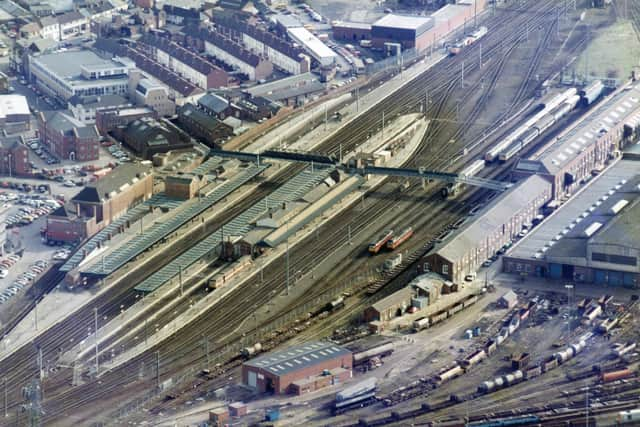Historic bridge linking Doncaster station to listed Plant Works set to be demolished
and live on Freeview channel 276
An application has been submitted to Doncaster Council for permission to dismantle around half of the Victorian bridge, which links Doncaster Station to Denison House – once the offices of the Plant Works – and crosses the East Coast Main Line.
It was once the main access point for the Plant’s workforce from the town centre, but nowadays is not open to the general public and its condition has deteriorated to unsafe levels.
Advertisement
Hide AdAdvertisement
Hide AdThe remaining spans of the bridge will also eventually be removed. Although the structure is not protected in itself, it forms part of the wider Grade II-listed Plant Works complex. Network Rail will also consider replacing the section between Platform 5 and Denison House to retain the connection.


The bridge was built in the 1870s but moved in the 1950s to accommodate electric cables, and has had some alterations during its life. Some original features, such as ornate columns, may be retained though the bridge has been described as ‘weak’ and ‘life expired’ and posing a safety risk.
In the application, the council states that is it keen for the historic link to be partially retained to encourage the future occupancy of Denison House, which is now let as office space.
Both LNER and Northern support its removal, which is described as the most ‘cost-effective’ solution.
Advertisement
Hide AdAdvertisement
Hide AdThe Great Northern Railway established its Doncaster workshops in 1853, and famous engines such as the Mallard and Flying Scotsman were built there. After the war, its function began to change as steam locomotive production ended and carriage building also stopped. It became a diesel repair shop, and some buildings were eventually demolished. Wabtec now operate from part of the original site, conducting carriage refurbishment.
One of the railwaymen who would have used the bridge in its heyday was Sir Nigel Gresley, the GNR’s chief mechanical engineer who designed Mallard and Flying Scotsman. He moved his family to the Thorne Road area of Doncaster in 1905 and would have commuted to his offices via the bridge.
At its peak, the Plant was Doncaster’s largest employer and had three medical centres, two dining halls that could seat 450 workers, and a staff sports club with over 1,700 members.
